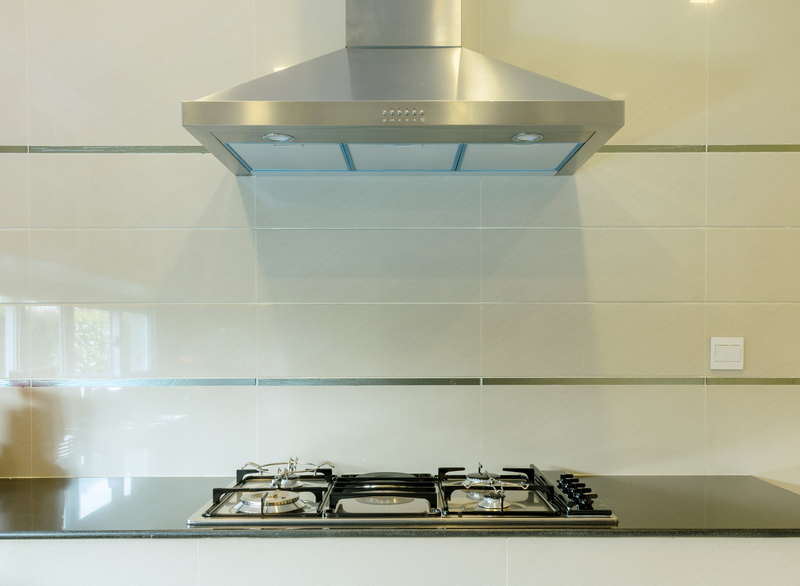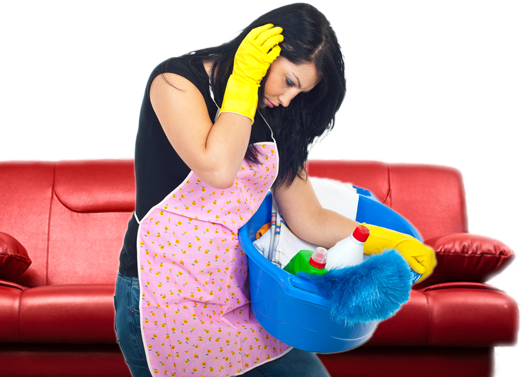Secrets to Cleaning Burnt-on Stovetop Residue with Ease
Posted on 16/06/2025
Secrets to Cleaning Burnt-on Stovetop Residue with Ease
A sparkling stovetop speaks volumes about your kitchen's cleanliness. However, burnt-on residue from spills and boil-overs is a common challenge faced by every home cook. Over time, stubborn stains accumulate and turn even the most inviting kitchen into a battleground against grime and grease. If you've ever scrubbed your stovetop for hours without seeing much progress, it's time to learn the secrets to cleaning burnt-on stovetop residue with ease. Read on to discover the most effective techniques, products, and preventative measures for tackling even the toughest stovetop messes.

Understanding the Science Behind Burnt-on Stovetop Residue
Before delving into the secrets of stovetop cleaning, it's important to understand why residue becomes so tough to remove in the first place. When food spills onto a hot surface, its natural sugars and proteins break down and bind with the stovetop material. As heat continues to cook the spill, it carbonizes, creating a tough, often blackened, layer that normal wiping won't touch.
Types of Stovetops and Their Residue Challenges
- Gas Stovetops: Open flames cause spills to burn quickly, leaving thick, crusty deposits around burners and grates.
- Electric Coil Stovetops: Food splatters can get trapped around coils, making them harder to reach and clean.
- Glass or Ceramic Stovetops: These popular, modern surfaces are sensitive to scratches and require gentle, yet effective cleaning methods for burnt-on residue.
Step-by-Step Guide: How to Clean Burnt Stains from Your Stovetop
Ready to reveal the secrets to easily removing burnt stains from your stovetop? Follow this comprehensive guide for proven results. These steps are designed for all stovetop types, with added tips for gas, coil, and glass surfaces.
1. Let Your Stovetop Cool Completely
It may seem obvious, but starting with a cool surface is the first safety step in cleaning. Attempting to scrub a hot stove can not only injure you, but also damage the surface due to harsh chemical reactions at high temperatures.
2. Remove Loose Debris
- For gas ranges, lift off burner grates and soak them in hot, soapy water.
- With coil stovetops, unplug and remove the coils if possible to access the drip pans underneath.
- For glass stovetops, simply wipe away crumbs with a dry cloth before deeper cleaning.
3. Choose the Right Cleaning Solution
There's no one-size-fits-all approach to cleaning burnt stove stains. Different messes require different solutions. Here are the top recommended options:
- Baking Soda and Vinegar: Nature's cleaning duo. Baking soda creates gentle abrasion, while vinegar cuts grease and lifts carbonized spots. Sprinkle baking soda over the burnt area, spray with vinegar, let it fizz and sit for 15 minutes, then wipe.
- Commercial Stovetop Cleaners: Products like Bar Keepers Friend, Weiman Cooktop Cleaner, or Cerama Bryte are formulated to tackle tough, burnt-on grime, especially on glass and ceramic stoves.
- Lemon and Salt: This all-natural option works wonders on lighter stains, combining acid and abrasion for a sparkling finish.
- Hydrogen Peroxide and Baking Soda: For extremely stubborn, thick residue, make a paste of baking soda and hydrogen peroxide, apply over burnt areas, and wait 20 minutes before gently scrubbing.
4. Use the Right Tools
- Microfiber Cloths: Gentle for surface cleaning and buffing.
- Non-Scratch Sponges: Effective for most types--won't scratch glass or ceramic.
- Plastic Scrapers: Essential for glass stovetops; scrape away residue without damaging the surface.
- Soft-Bristled Brushes: Great for grates, knobs, and crevices.
Never use steel wool or abrasive pads on glass or ceramic surfaces, as these can scratch permanently.
5. Scrub, Soak, and Repeat
Once your cleaning solution has had time to work its magic, gently scrub the area. Apply moderate pressure and repeat application if the stain persists. For especially thick or old residue:
- Use baking soda paste liberally and cover with a damp towel. Leave overnight for deeply set stains.
- For removable grates and burner caps, soak in a sink with hot water and a squirt of dish soap. After an hour, stains should wipe away easily.
6. Rinse and Buff to Shine
After all residue is gone, rinse the cleaned area with water or a damp cloth to remove any cleaning product residue. Buff dry with a soft microfiber cloth for a streak-free shine.
Special Techniques for Different Stove Types
Gas Stovetop Cleaning Secrets
- After soaking grates and burner caps, use a toothbrush to dislodge stubborn crumbs in crevices.
- If burner holes become clogged with residue, use a straightened paperclip to gently clear them (never use toothpicks, as they can break off).
- Cleaning underneath burners is essential; food debris here can affect flame quality and cause future spills to burn quicker.
Electric Coil Stovetop Tips
- Always unplug the stove before removing coils.
- Dip drip pans in a vinegar-baking soda bath to dissolve burnt stains. Scrub and dry thoroughly before replacing.
- Wipe electrical contacts with a dry cloth only--never wet them.
Glass and Ceramic Stovetop Cleaning Hacks
- Use a razor blade scraper at a 45-degree angle for thick, flat carbon spots. Always apply with caution and plenty of lubrication (cleaning solution or water).
- After cleaning, apply a glass cooktop polish for added luster and to help prevent future stains from sticking.
- Avoid standing water on the surface, which can cause mineral buildup or streaks.
Prevention Is Key: Keep Your Stovetop Cleaner Longer
The true secret to an easy clean-up is to address spills as soon as they occur. Here are expert tips to prevent stubborn, burnt-on messes in the first place:
- Use pot lids and splatter screens to minimize splashes from boiling or frying foods.
- Wipe up spills immediately (once cool) with a damp cloth before they cook onto the surface.
- Line drip trays with aluminum foil (on gas or coil stoves only, never on glass) for easy disposable clean-up.
- Apply a light film of vinegar or stovetop protectant after each deep clean. This forms a barrier, making future clean-up a breeze.
- Perform a quick wipe-down after every cooking session. A minute of effort daily prevents hours of scrubbing later!
The Best Homemade Stovetop Cleaner Recipes
You don't need to rely solely on chemical-laden products for a sparkling stove. Here are two proven homemade solutions for removing burnt-on residue with items you probably already have:
Baking Soda and Dish Soap Paste
- Mix two tablespoons baking soda with a few drops of dish soap to form a paste.
- Apply to burnt spots, let sit 10 minutes, then scrub and rinse.
Lemon and Salt Scrub
- Cut a lemon in half and dip in coarse salt.
- Use the lemon as a natural scrubber to tackle greasy, burnt areas.
- Wipe clean with a damp cloth and buff dry.
When to Call in the Professionals
If you've tried all of the above secrets and still can't remove deeply set or widespread burnt-on stains, it may be time to consult a professional cleaning service. This is also true for delicate or high-end stovetops where maintenance is best left to experts.
- Tip: Check your stove's warranty before using any abrasive tools or cleaners--some warranties may become void if improper cleaning methods are used.

Frequently Asked Questions: Cleaning Stubborn, Burnt Stove Stains
-
How do I remove burn marks from a stainless steel stovetop?
*Apply a paste of baking soda and water, let sit, then buff gently with a microfiber cloth in the direction of the steel's grain.* -
Will vinegar harm my glass stovetop?
*No. Vinegar is safe, but avoid mixing it with bleach or using while the stovetop is hot.* -
How often should I deep clean my stovetop?
*A thorough cleaning every 2-4 weeks is ideal, but daily wipe-downs will keep heavy buildup at bay.*
Conclusion: Make Burnt-on Stovetop Residue a Thing of the Past
Keeping your stovetop clean doesn't have to be a never-ending battle. By applying these expert secrets to cleaning burnt-on stove residue with ease, you can turn even the most challenging mess into an easy fix. Use the right combination of cleaning products, gentle tools, and preventative habits, and your kitchen will sparkle with minimal effort. Remember: consistency is key, and with these methods, you'll never dread cleaning your stovetop again!
Ready to take action? Try these proven cleaning secrets today and let your kitchen shine!




